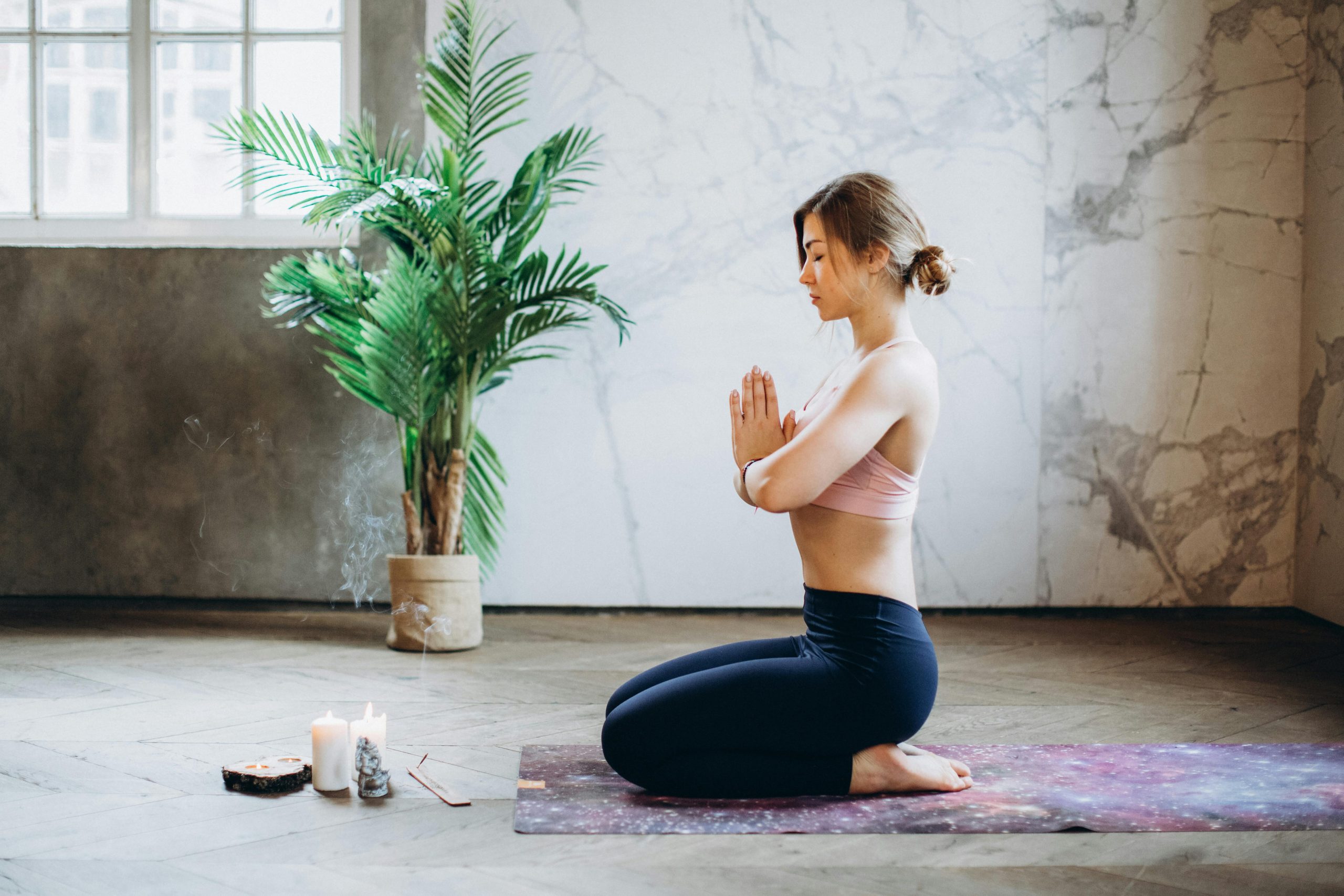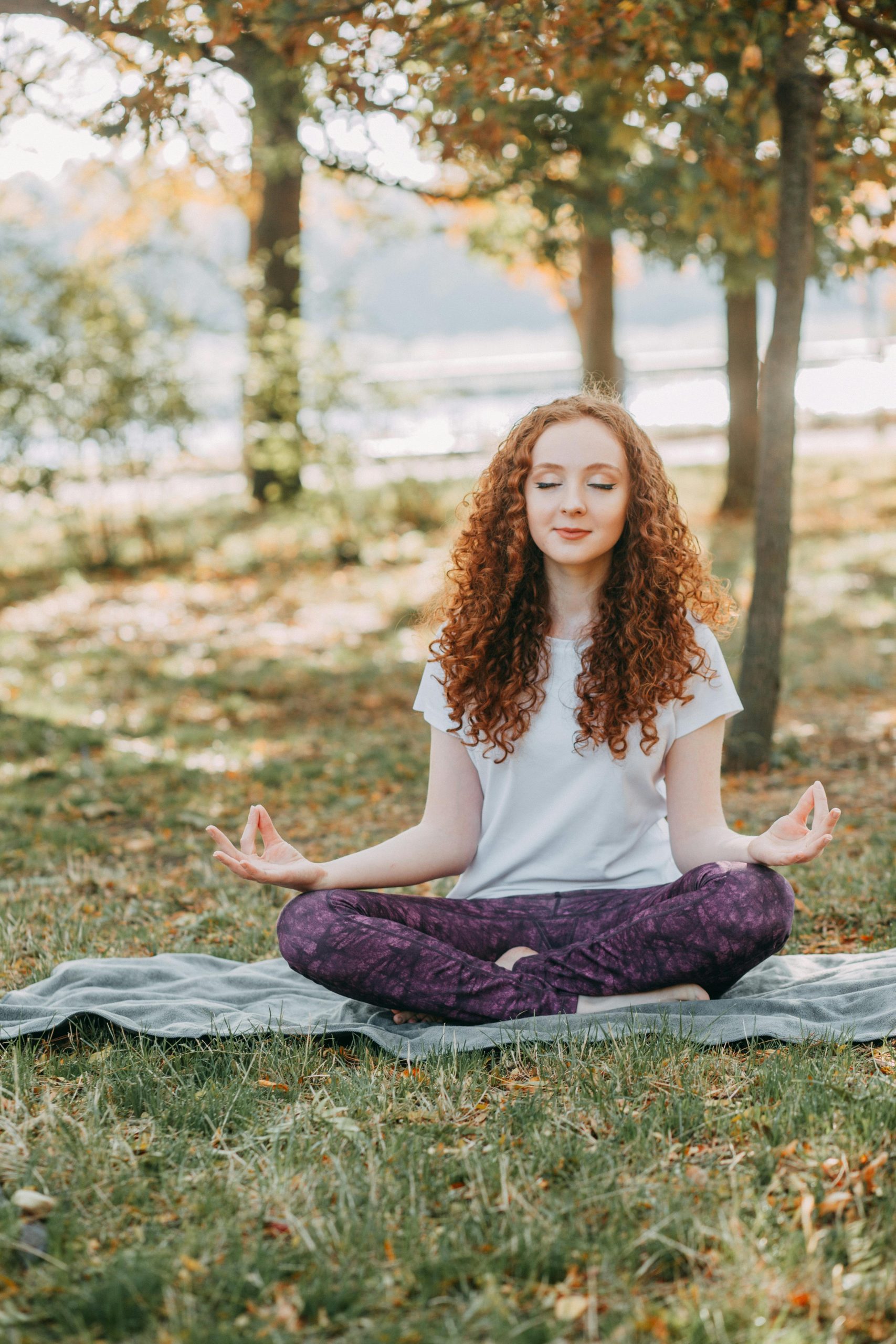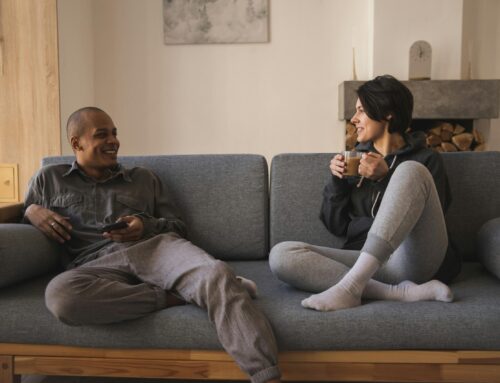When anxiety comes up, it’s easy to feel overwhelmed and get caught up in. However, there are some simple techniques that can help you get and stay grounded!
When we get anxious, we go into fight, flight, or freeze mode because we feel unsafe and our survival instincts kick in which causes physical symptoms like a racing heart or having a hard time catching your breath.
To calm down, we want to self-soothe and let our body and brain know that we are not in danger and it’s safe to relax.
In this post, we’ll discuss 5 simple ways to deal with and reduce your anxiety when it’s happening!

1. Deep Breathing
Anxiety often makes your breathing feel restricted because when you are in an anxious or panicked state you take shallow breaths. Luckily, there’s an easy fix and it’s deep breathing! When you take the time to breathe, you signal to your brain that there is no present danger which helps you calm down.
How to do it:
Here are two easy, deep breathing techniques.
Belly Breathing
With belly breathing, you want to place a hand over your stomach and your chest. Breathe in slowly through your nose and feel your belly expand. Then, breathe out slowly through your mouth and feel your stomach deflate like a balloon. Do this as often as you’d like, but you’ll want to give it a few times before you’ll notice you start calming down.
Box Breathing
With this technique, you breathe in counts of 4. Inhale for a count of four. Hold for four. Exhale for four. Hold for four. Repeat this for a few minutes to ground yourself.
Want to learn about other breathing exercises? Check this article out.
2. Progressive Muscle Relaxation
Ever heard of something called progressive muscle relaxation? It’s actually a lot simpler than it sounds. When you get anxious you tend to get physically tense; progressive muscle relaxation uses this tendency by encouraging you to consciously tense up as hard as you can and then let go.
Here’s how it works:
Start with one area of the body at a time, like your forehead. Scrunch it up as much as you can and hold it like that for at least 10 seconds. Then slowly relax and enjoy the feeling of letting go of that scrunched-up tension. Work your way through the rest of your body.
If you want descriptions of how to relax six other parts of your body (like jaw and legs), you can find them here.
3. Tapping
Tapping, also known as the emotional freedom technique (EFT) is based on Chinese medicine and the idea that certain areas of the body hold energy (called meridian points). By tapping on these specific points you restore their energetic balance helping you feel calmer. It’s like acupuncture, but without the needles!
How to actually do it:
Before you begin, you want to identify the problem you’re experiencing. If you’re stressed, you could say, I’m feeling stressed about x, y, and z. Then you want to choose an affirmation that addresses that problem. For example, I am capable of handling my stress. You repeat the affirmation as you go through the tapping sequence!
While the tapping sequence can vary, here’s an easy one to do. Tap each spot four times while saying your affirmation.
1 – Using two or four fingers with each hand, tap the middle of your forehead as you say your affirmation out loud.
2 – Next tap your temples,
3 – underneath your eyes,
4 – underneath your nose,
5 – each side of your chin,
6 – and both sides of your collarbone.
7 – Then criss-cross your arms and tap your collarbone again.
That’s it! Consider yourself reset! Feel free to repeat this as many times as you’d like.
If you want to learn about the other meridian points, check out Healthline’s article.

4. Meditation
Meditation is always a great way to take deep breaths, ground yourself, and let go of overwhelming thoughts. However, mindfulness can be challenging when you feel like your thoughts are going a mile a minute. When you’re feeling particularly anxious, it can be helpful to do a short, guided meditation.
Here are some meditation resources to walk you through getting present.
Spotify – Just search “anxiety meditation” or “meditation to calm” – you’ll find plenty of guided meditations to walk you through your thoughts.
YouTube – This is another great place to find guided meditations, just like Spotify, all you have to do is search!
Headspace – This meditation app is a great place to find all kinds of meditation, from series to quick 5-minute resets, they have a lot of options to choose from. However, Headspace is a paid app, but if you’re a student it’s only $10 a year!
Calm – Another popular meditation app with various meditation types to choose from! Both apps also provide resources for sleep and self-improvement. Calm is more expensive than Headspace costing around $15 a month.
5. 4. 3. 2. 1. Technique
Due to the fact that anxiety causes you to get caught up in a whirlwind of thoughts, getting present by paying attention to what’s going on around you can help reduce your anxiety immediately. It’s also easy to do no matter where you are!
Here’s how to do it:
After you’ve taken a few deep breaths to calm yourself look around and find…
- 5 things you can SEE – For example: a mug, a car, or someone crossing the street. Go ahead and name them in your head.
- 4 things you can TOUCH – For example: a hairband on your wrist, the chair you’re sitting on, or the edge of your nail. Touch them and notice how they feel.
- 3 things you can HEAR – For example: a baby crying, someone typing on their laptop, a dog barking. Any sound that is happening in the outside world!
- 2 things you can SMELL – For example: coffee brewing, someone’s perfume, bathroom soap. If you need to leave to find these things do it! If you’re by yourself, smell your shirt and an object around you.
- 1 thing you can TASTE – For this one, you can focus on your mouth. What’s the inside of your mouth taste like? Get a piece of gum or take a sip of a beverage and focus on the flavor.

When anxiety comes up, it’s easy to let your racing thoughts take you to a place where you feel out of control and panicked. However, if you take the time to pause, acknowledge that you’re freaked out, and then implement a strategy to help you calm down, this will not only give you more of a sense of control over your anxiety but also prevent your anxiety from worsening and even causing an anxiety or panic attack.
We hope these 5 techniques provided you with some easy tools to get grounded when you’re feeling anxious. If you’re needing more support when it comes to managing your anxiety, we’re here for you! Check out our services to learn which one is the best fit for you!





